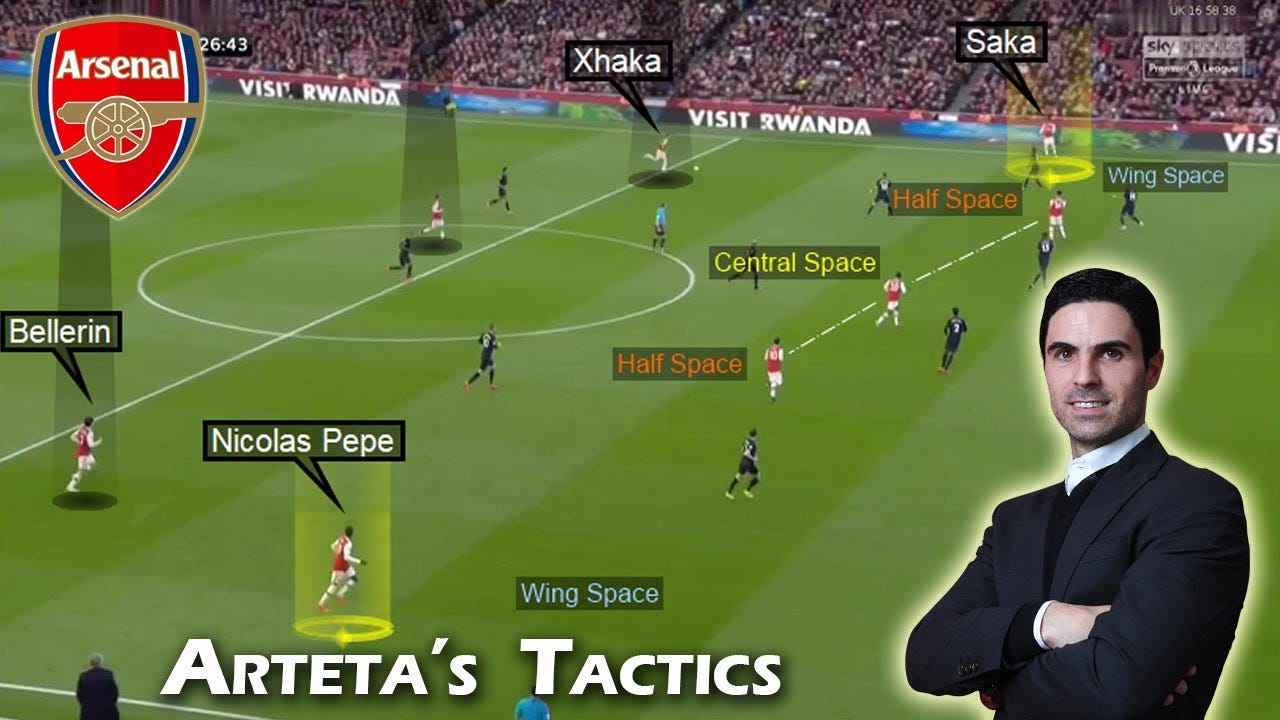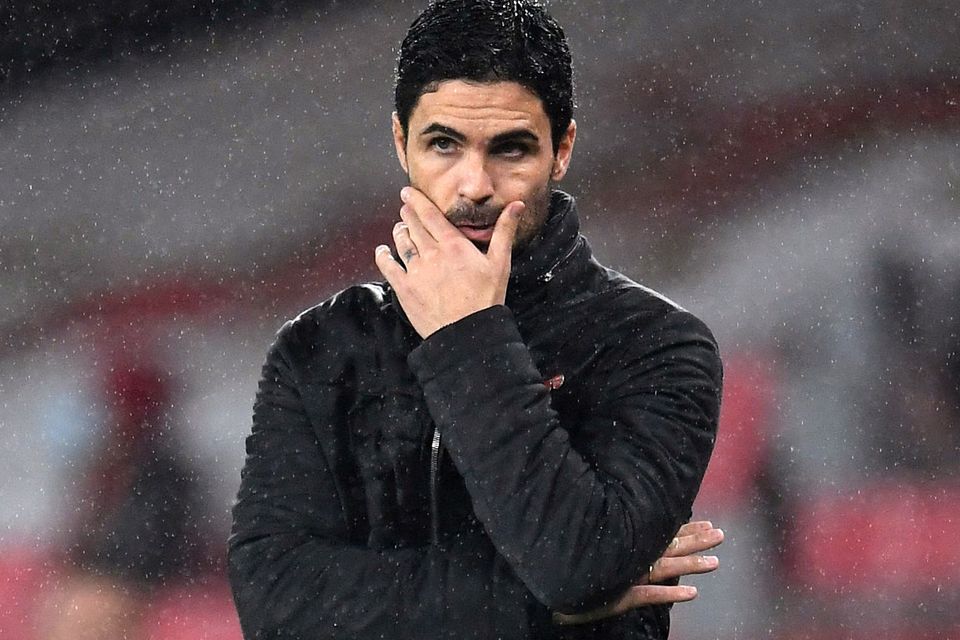Majority of neutral fans do not want to talk about this game and I will admit, it was quite the letdown. I am an Arsenal fan so I expected a lot more from the Gunners. Liverpool won their game earlier in the day against Brighton and returned to the summit of the English Premier League (EPL), hence I expected Arsenal to enter the Etihad Stadium hungry and determined to thwart Manchester City and reclaim the number one spot on the table.
Instead, what we got was an Arsenal team sacrificing their identity to prevent conceding a goal against a dominant Manchester City. Although I am slightly disappointed with the performance, it has to be said that Arsenal went to the home of the champions and walked away with a point and zero goals conceded. It is a stepping stone to build on for Mikel Arteta’s men because the last time Arsenal defeated Manchester City at the Etihad Stadium was in 2015 and since then, Pep’s men have been unbeaten at home for an astonishing 39 games.
Starting Lineups
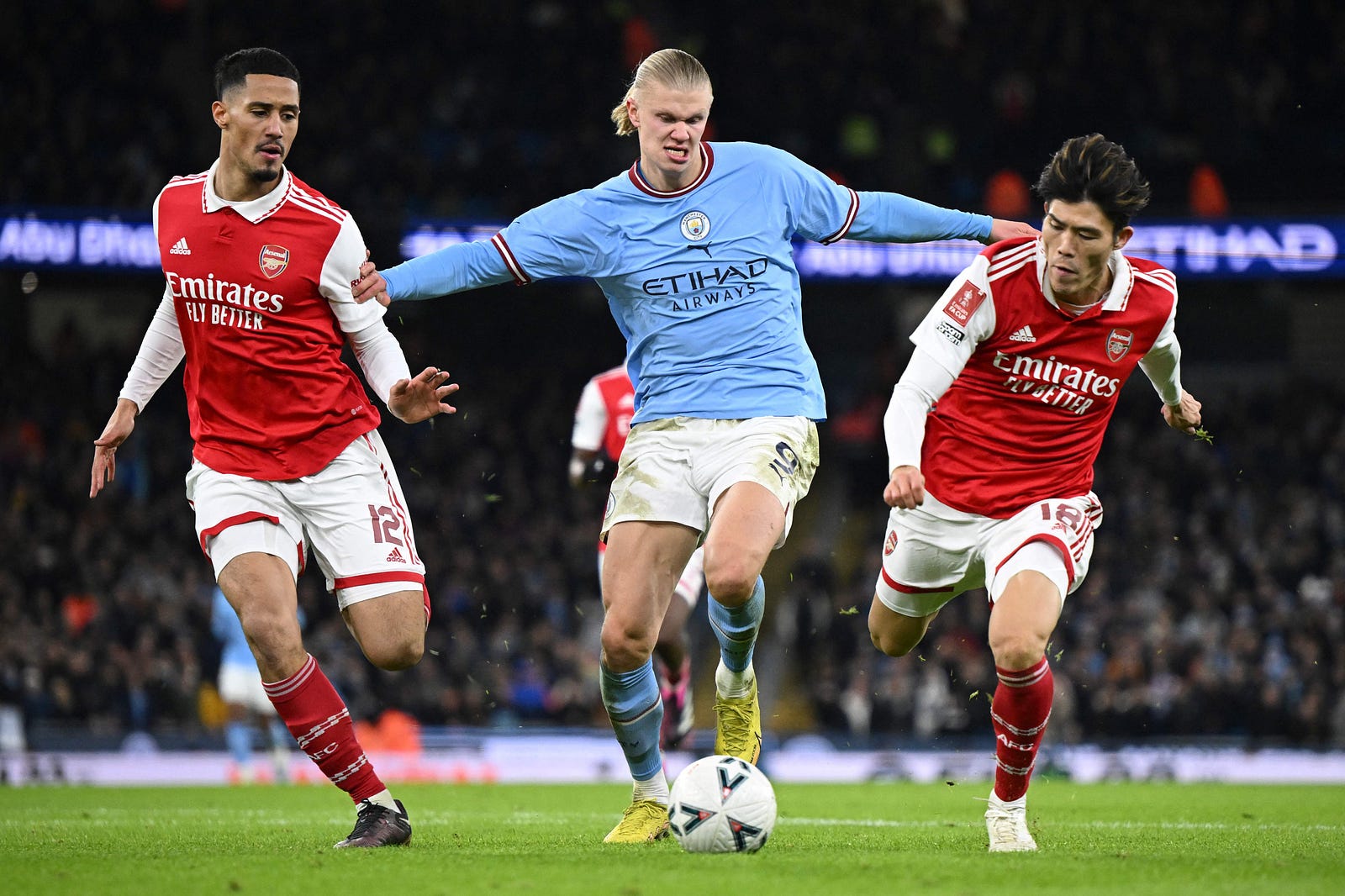
Both teams had injury concerns leading up to the match which affected the starting lineups and formations. Manchester City arguably had the worse wear and tear as number 1 goalkeeper Ederson remained injured with the addition of right-back Kyle Walker and midfielder John Stones. Kevin De Bruyne was also reported to be a potential miss, however managed to remain in the starting eleven.
For Arsenal, there were concerns about Bukayo Saka’s fitness as he picked up a slight knock before the international break, however was deemed fit enough to start the match. There were doubts about Gabriel Jesus and Martinelli as well, nevertheless the former was available to start the match while the latter managed to book a place on the bench.
Manchester City: Stefan Ortega, Ruben Dias, Nathan Ake, Manuel Akanji, Josko Gvardiol, Rodri, Phil Foden, Mateo Kovacic, Kevin De Bruyne, Bernardo Silva, Erling Haaland.
Arsenal: David Raya, Ben White, William Saliba, Gabriel Magalhaes, Jakub Kiwior, Declan Rice, Jorginho, Martin Odegaard, Bukayo Saka, Kai Havertz, Gabriel Jesus.
Formations and Tactics
Manchester City utilised an unusual formation in an attempt to outwit their challengers. Pep has typically utilised a 4–2–3–1 formation where Rodri and Stones sit at the centre of midfield with De Bruyne playing in front of them. Erling Haaland typically starts in his usual lone forward role supported by wingers Jeremy Doku and Bernardo Silva/Phil Foden.
However, for this all-important game the Spaniard installed a 4–1–4–1 formation which was constantly evolving throughout the game resulting from regular interchanges between players. In the last couple of weeks, Arteta has tweaked Kai Havertz’ position in the team from a left-sided attacking midfielder to a lone striker. The Spaniard maintained his stance on the German’s new role and continued with his favoured 4–3–3 formation which Arsenal have thrived in for the majority of this season.
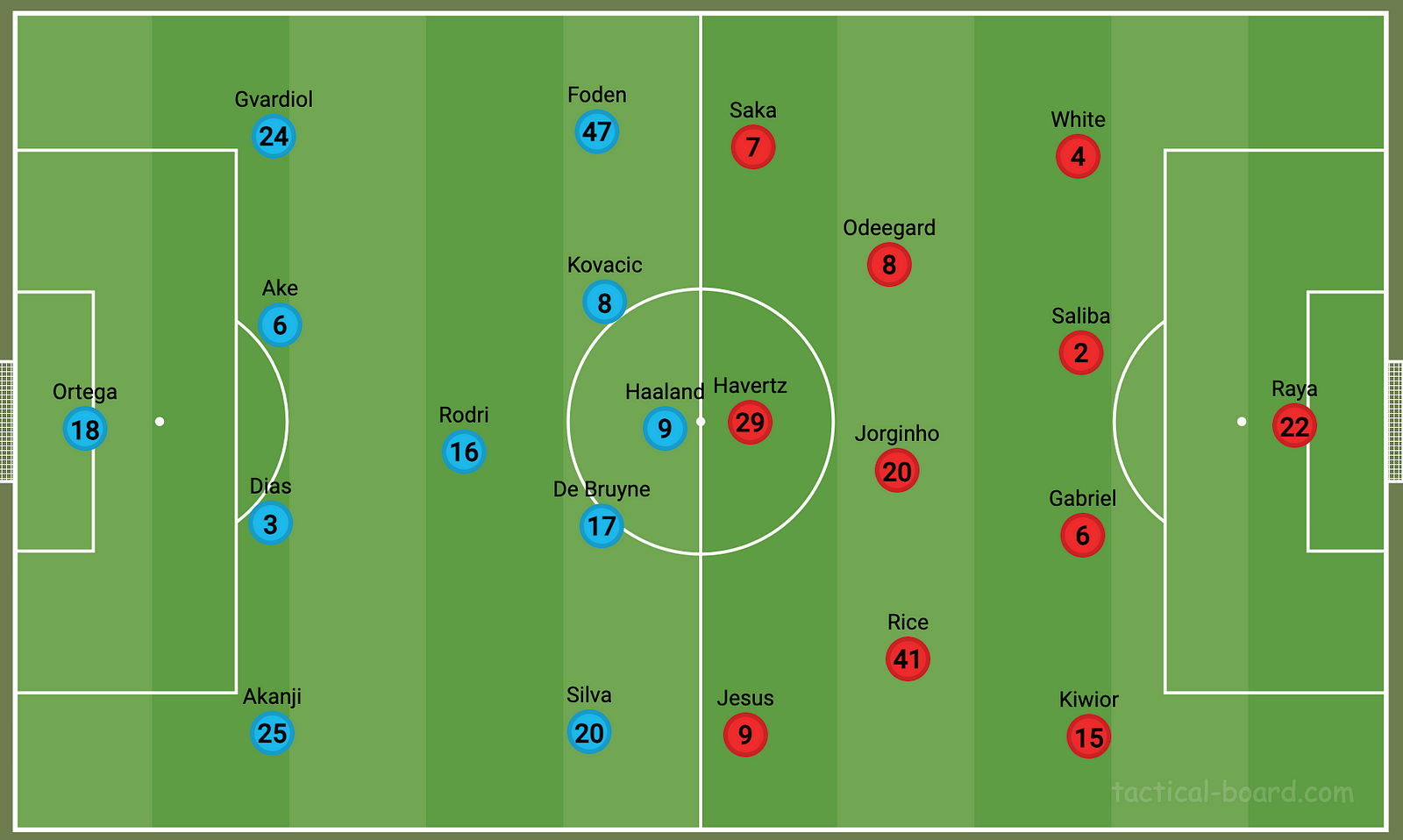
Arteta set his team up in a low-block defensive formation which followed a zonal marking system to prevent Manchester City from playing through balls in behind the defence because of the obvious threat of Haaland’s pace and De Bruyne’s ability to pick him out with perfectly timed passes. Manchester City on the other hand tried to counter this by constantly shuffling the ball from side to side and creating overloads on the wings to bombard the Arsenal defence with crosses into the box.
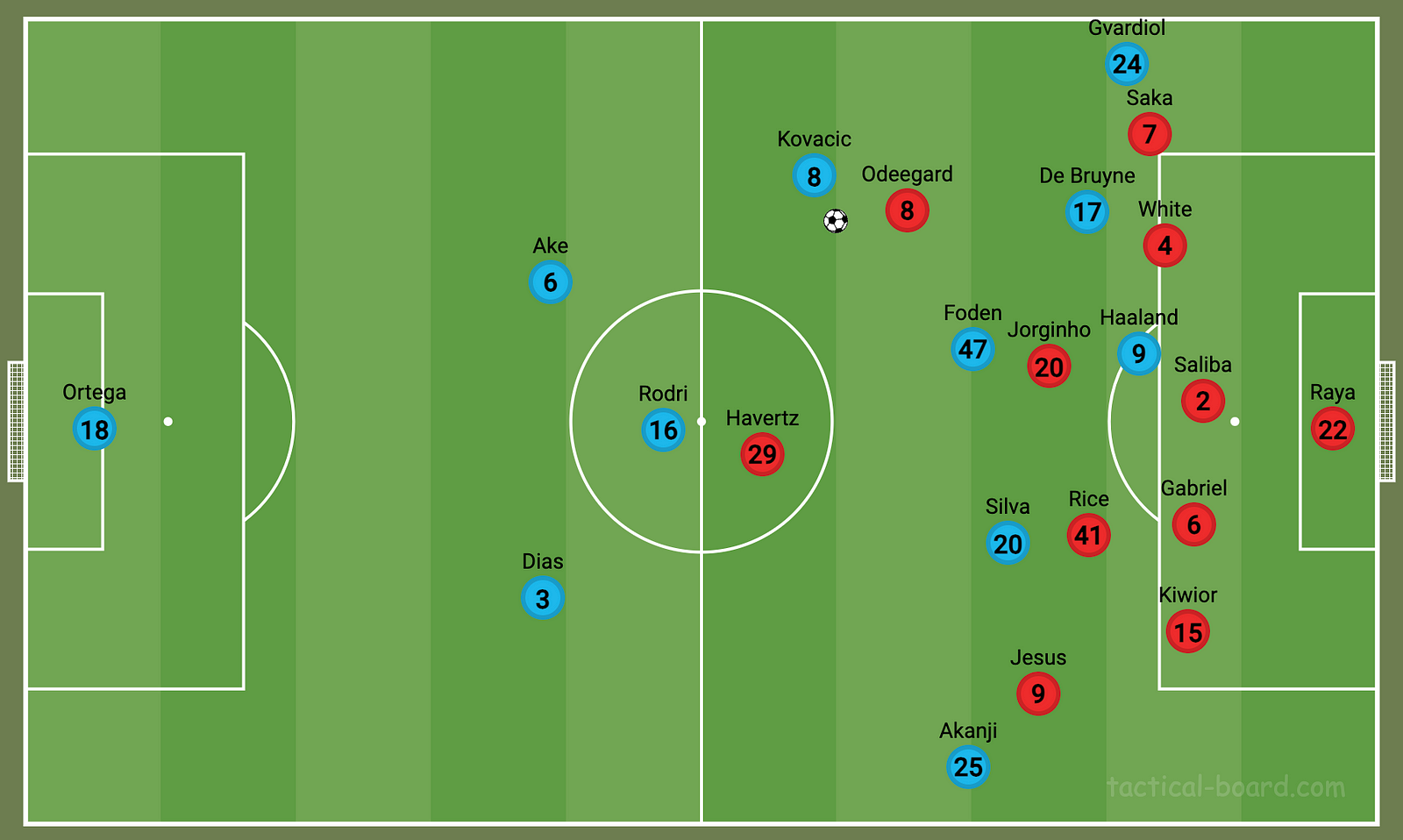
In this instance, Manchester City were attacking through the left-side with Gvardiol the left-back playing as a left-winger and Akanji the right-back playing as the right-winger. As a result, Kovacic and Rodri were forced to play closer to the defence to make up the gaps left by the wingers. Foden, De Bruyne and Silva tried to find pockets in between Arsenal’s midfield and defensive line to cause them problems.
Foden, De Bruyne and Haaland struggled to get into the game especially in the first half because they were being tightly marshalled, however Silva was finding spaces in midfield and occasionally interchanging positions with Akanji on the left-wing where he was able to play incisive passes and keep the momentum going in City’s attack.
Another surprise was Gvardiol on the left-wing, he seemed to relish playing in that position and was being picked out with long balls from the opposite side which left him in 1-v-1 situations against Saka who was tracking back. With the free-roaming Bernardo Silva, Gvardiol playing as a winger and Kovacic at times filling in at left-back, Guardiola ventured to disorganise Arsenal’s defensive shape and lure players out of position.
However, Arsenal stood firm and were purposefully compact because they understood that any minuscule error could cost them.
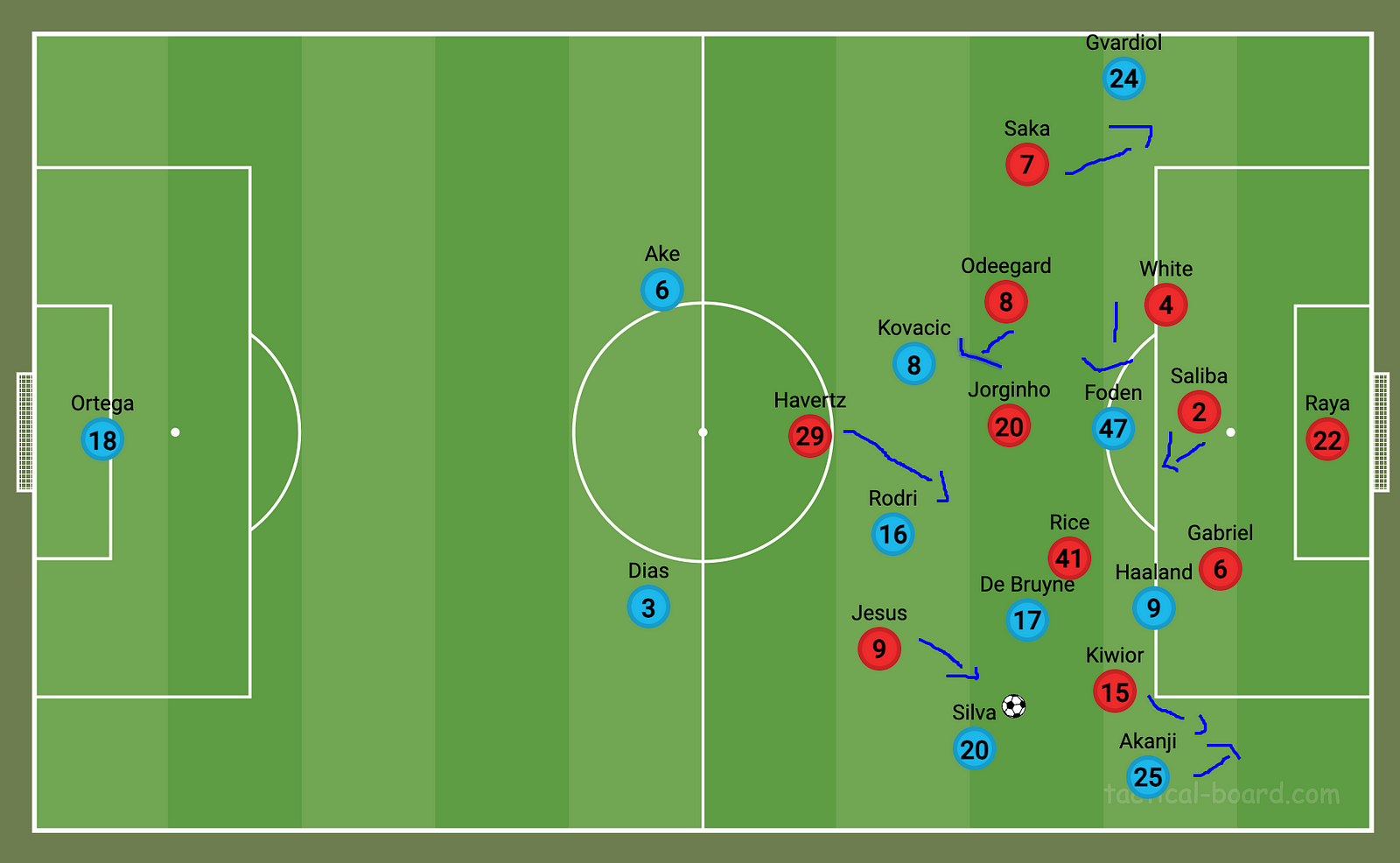
From the opening minutes of the game, it was obvious that Arteta set his side up to play for a draw as whenever City tried to mount an attack, Arsenal had all eleven players in their own half. It was a defensive masterclass performance resulting from a thorough zonal marking system. In this instance, Bernardo Silva is in possession of the ball and Akanji is making an overlapping run outside him but he cannot pick him out because Kiwior is tracking him.
At the same time, De Bruyne offers support by shifting from the centre of the midfield towards the right, however Declan Rice is assigned that space and monitors the Belgian’s movements. Similarly, Haaland makes a run to try and find an opening in the defence but instead of Saliba tracking him, now Gabriel is marking him because he he has moved into the Brazilian’s defensive territory.
Rodri becomes available in midfield to receive the ball, however when he does, Kai Havertz will vacate the centre-forward space and instead come deep to put pressure on the Spaniard. Jorginho’s positioning is key in this situation because he sits right in the centre of midfield in anticipation which allows him to easily monitor Phil Foden at the edge of the penalty box or race out to Rodri or even Kovacic if either of them manage to find space to receive a pass.
Whilst Silva assesses his options, Gabriel Jesus who is supposed to play on the left-wing also drops back to rush the Portuguese into making a decision and because there are no available options, Silva has to go backwards to Ruben Dias which allows Arsenal to reset back into their allocated positions. This was a recurring pattern in the game whenever City attempted to attack from either side of the pitch.
Another aspect of this chess match was Manchester City attempting to play out from the back whilst Arsenal imposed a high-press.
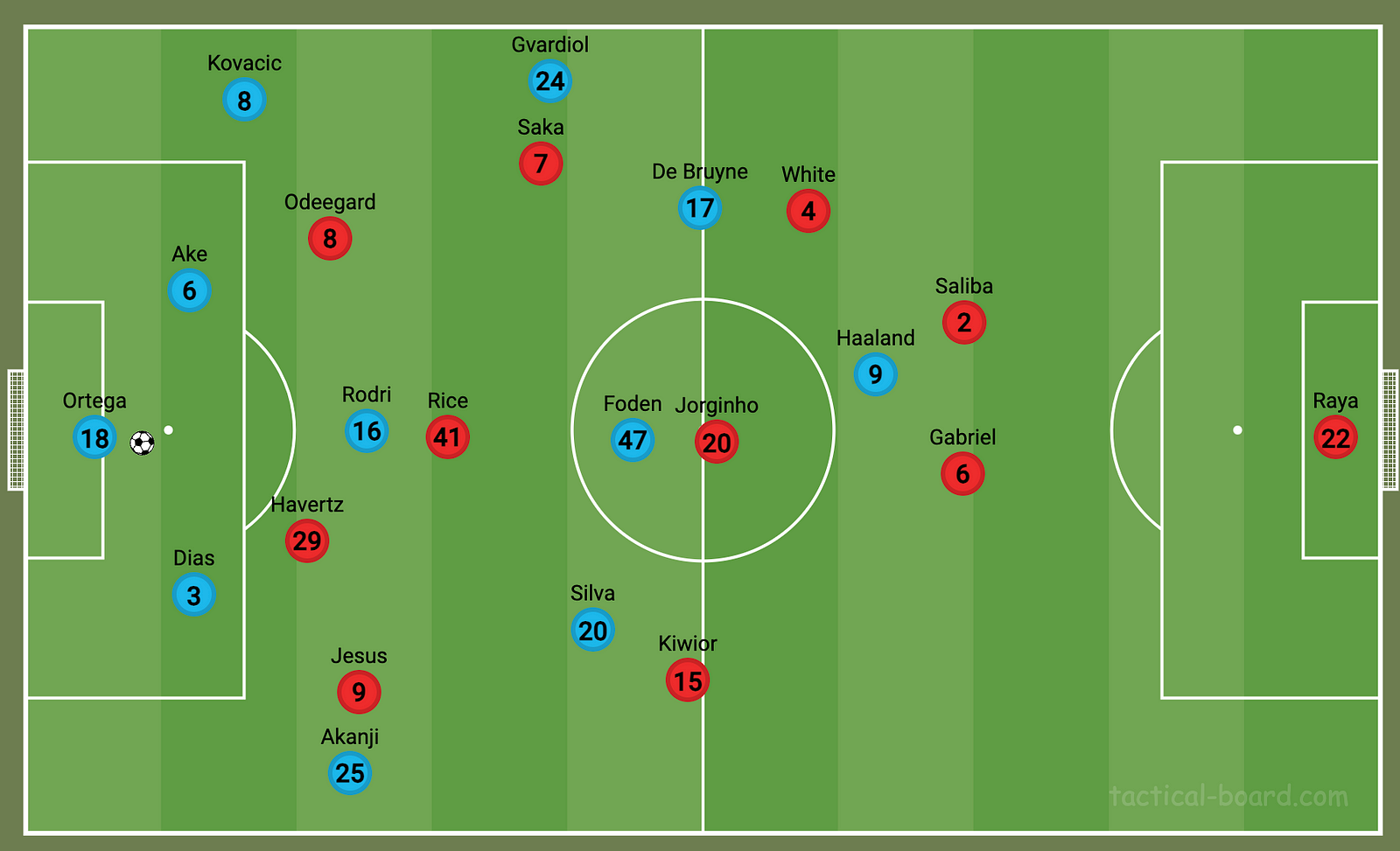
Due to Gvardiol playing as the left-wing, whenever City were playing out from their goalkeeper, Kovacic filled in as the left-back and was monitored by Odeegard. Havertz pressed Dias or Ake to prevent them from playing the ball forwards, Rice moved high up the pitch to prevent Rodri from receiving the ball from either the defenders or directly from the goalkeeper.
Jesus marked Akanji, Saka marked Gvardiol and Ben White stuck to De Bruyne’s back while Saliba and Gabriel kept an eye on Haaland. This high press made it difficult for City to spray passes to their key players and often had to go backwards or sideways instead of forwards. However, it is difficult to keep a team like Manchester City penned in for long and on those rare occasions when they did manage to beat the press.
Arsenal were quick to retreat and concede a foul inside their own half. A team of City’s quality and composure only needs a couple of passes to put the ball in the back of the net. Hence, whenever De Bruyne, Foden or Silva were able to free themselves from their defenders and find space they were immediately brought down before they could cause significant damage.
Overall it was a solid defensive performance from Arsenal, each player knew exactly which zone they were responsible for and there were minimal errors made. Although Arsenal played for a draw, they did have rare opportunities from counter-attacks which they squandered. Likewise, regardless of a defensive masterclass performance, a team as well-rounded as Manchester City will always find a way to create key chances and they did.
Unfortunately, they lacked the finishing touch as well. We all know that an open game of football between these two teams would probably result in a goals galore. This time, with too much at stake, all we got was a cagey chess match that ended in a goalless draw because neither team were willing to take risks.
